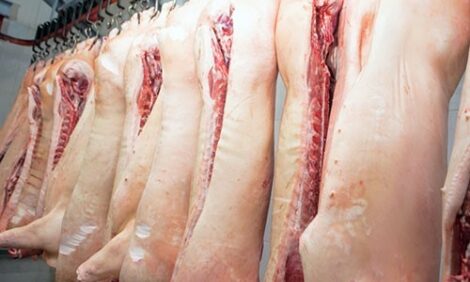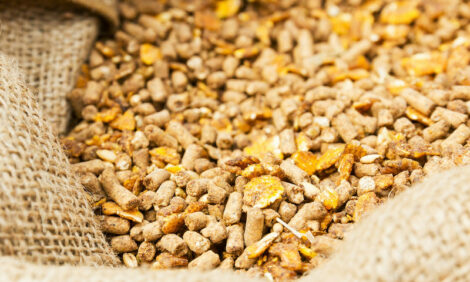



H1N1 Hit Hard but Zhongpin Reports Better Results
CHINA - Zhongpin Inc., a leading meat and food processing company in the People's Republic of China, has reported higher revenues, net income, and diluted earnings per share for the second quarter (Q2) 2009 and reaffirmed its prior guidance for the full year 2009.Second Quarter 2009 highlights
Revenues at Zhongpin Inc. increased 17.7 per cent in the second quarter 2009 to $161.8 million from $137.5 million in the second quarter 2008. Net income increased 25.9 per cent to $10.7 million from $8.5 million over the same period.
Diluted earnings per share increased 24.1 per cent to $0.36 in the second quarter 2009 from $0.29 in the second quarter 2008.
The downward trend of hog and pork prices during the second quarter turned upward in June and prices have continued at higher levels in July and early August.
Prior guidance for 2009 is reaffirmed.
Zhongpin Inc. added that construction of a new pork processing plant in Tianjin began in April.
Chairman/Chief Executive Officer's comments
Xianfu Zhu, Chairman and Chief Executive Officer of Zhongpin Inc., said: "The second quarter was unusual for us, primarily due to the temporary fear consumers had about getting the A(H1N1) flu from pork products, which the world's health agencies have confirmed is not possible."
In late April 2009, the A(H1N1) flu was reported in Mexico, the United States, Europe, and other countries. In June 2009, the A(H1N1) flu was reported in China, which adversely affected the country’s pork industry, as it has in other countries throughout the world. Pork sales significantly declined in China due to consumers’ fear of contracting the disease through pork consumption. The Chinese government took steps to ease the fear by educating consumers that eating pork will not cause the flu and by renaming the virus as the A(H1N1) flu – the same identification used by the World Health Organization and the US Centers for Disease Control and Prevention – in an effort to resume the consumption of pork products and to protect the hog breeding and pork industries. With these efforts, the consumption of pork in China recovered in the mid-May, approximately two weeks after the initial reports of the A(H1N1) flu in North America.
Pricing and tonnage
Hog and pork prices decreased sequentially about 20 per cent during the second quarter from the first quarter 2009, primarily because the supply of hogs was higher than the market demand. The imbalance in supply and demand was due primarily to three factors:
- an oversupply of hogs
- to a lesser extent, the seasonal decline in market demand for pork that is typically associated with warmer weather, and
- the global outbreak of the A(H1N1) flu virus in April 2009, which temporarily scared consumers and adversely affected the hog and pork industries.
Mr Zhu said: "During the second quarter, with the disruptions in the market, we acted to minimize the effect on the company and maximize our potential benefit from the temporary price and volume declines by (1) increasing our sales in our highest gross margin products, which are prepared pork products; (2) extending payment terms to encourage sales, especially in prepared pork products with the highest margins; (3) purchasing more hogs as the prices declined to increase our inventory of frozen pork because we assumed that prices were temporarily depressed and would recover, which should give us higher gross profits as we sell from lower-cost inventory at higher prices, and (4) sustaining our market and capacity expansions and research and development programme.
"Hog and pork prices began to increase in June and have continued at higher levels in July and early August 2009.
"Pork prices were also affected in June by the Chinese government, which bought frozen pork to add to the country's national pork reserves. The government increased the national pork reserves to stabilise the price and protect the interests of hog breeding farmers. The government's purchasing policy is based on the relationship of the price of hogs to the price of corn, the principal hog feed. The government authorised certain qualified enterprises, including Zhongpin, to acquire hogs and to slaughter, process and stock them as frozen pork. That purchasing has tended to support higher hog and pork prices so that the market price of hogs was above the break-even point for farmers. Since the end of the second quarter of 2009, hog and pork prices have increased about 10 per cent.
"For the second half of 2009, we continue to expect steady growth in the sales of our pork and pork products. The recent decline in the price of live hogs has caused a number of hog breeders to terminate their breeding operations, which we expect will reduce the oversupply of live hogs during the second half of 2009. We anticipate a change in the supply of live hogs, which we expect will cause prices to stabilise and to begin increasing in the second half of 2009."
Market and capacity expansions continue
Mr Zhu continued: "This year, we are continuing to implement our strategic plan to sustain the growth we have experienced in the last five years.
"For example, in January 2009, we began operating our new chilled and frozen pork plant in eastern Henan province. It has an annual capacity of approximately 80,000 metric tons. In April 2009, we started processing in our new vegetable and fruit facility in Changge, It has an annual capacity of 30,000 metric tons.
"Over the next 12 months, we expect to continue to expand our distribution channel and develop new markets. Through our aggressive marketing campaign, we also expect to increase our brand awareness and customer loyalty. In addition, we intend to streamline further our supply chain to create a unified, safe, and efficient cold-chain logistics system.
"Research and development is important for our continuing success. Working with China Agriculture University, we have established the Henan Province Prepared Meat Products Technology Research Center, which has been certified by the Technology Bureau of Henan Province. This research center will increase our research and development capability.
"We also have invested in training and human resources development for our employees so that we can sustain rapid and healthy growth while maintaining an attractive profit margin.
Outlook for pork demand in the expanding Chinese economy
Mr Zhu said: "As a result of the education consumers have received about the recent A(H1N1) virus, they increasingly are focusing on food safety, which highlights the importance of high-quality products and stringent testing procedures. Highest quality and stringent testing are the foundation of Zhongpin's modernised, safe and hygienic processing facilities.
"With China's live hog prices and pork prices beginning to recover during the latter part of the second quarter, we expect that the upward trend is likely to continue in the cooler second half of 2009, when pork consumption typically increases. Further supporting that outlook is China's economy, which is expected to grow at higher rates than in the first half of 2009.
"Pork is China's primary source of protein. We believe the outlook for the long-term potential of China's meat processing industry remains very positive. We plan to continue to expand our distribution and processing plants to serve this market opportunity and build a leading brand position in the pork category.
"We expect to increase our market share in the meat and meat products segment of our target markets in the second half of this year.
"Based on our operating results for the first half of 2009, we remain confident in our ability to reach our forecast results for the full year 2009 and are maintaining our prior guidance."
Guidance
Zhongpin's full year 2009 guidance for revenues continues to be in the range of $780 million to $810 million, with a gross margin of approximately 12.0 per cent, net profit margin of at least six per cent and diluted earnings per share in the range of $1.50 to $1.63, assuming common shares used to calculate diluted earnings per share (EPS) are 30.7 million shares. This guidance also assumes that hog and pork prices increase about 10 per cent during the third quarter and stabilise at that new level in the fourth quarter.
Further Reading
| - | You can view the full report by clicking here. |








